Contents
Durability, quality, value … unfortunately, these are words that do not get lumped together too much anymore. This is especially true in the knife world, where you usually get what you pay for. And if you do not get you what paid for, it almost always means you got less, not more.
However, there are still some instances where you, the buyer, seem to come out ahead in the bargain. Some knife manufacturers just continually churn out quality products and over-deliver for the price. Spyderco and Mora are a couple of brands that we have reviewed here that spring to mind. And considering some of the knives featured in this article, you can probably throw KA-BAR into that mix as well. If you’re looking for the best KA-BAR knives out there, we have picked 8 that might prove to be very good options for your survival or EDC needs.
#2 KA-BAR JAROSZ TUROK FIXED BLADE KNIFE | #1 KA-BAR BECKER BK2 | #3 KA-BAR 1217 USMC FIGHTING KNIFE |
1st Runner-Up | Best Overall | 2st Runner-Up |
Steel: 1095 Cro-Van | Steel: 1095 Cro-Van | Steel: 1095 Cro-Van |
ABOUT KA-BAR KNIVES
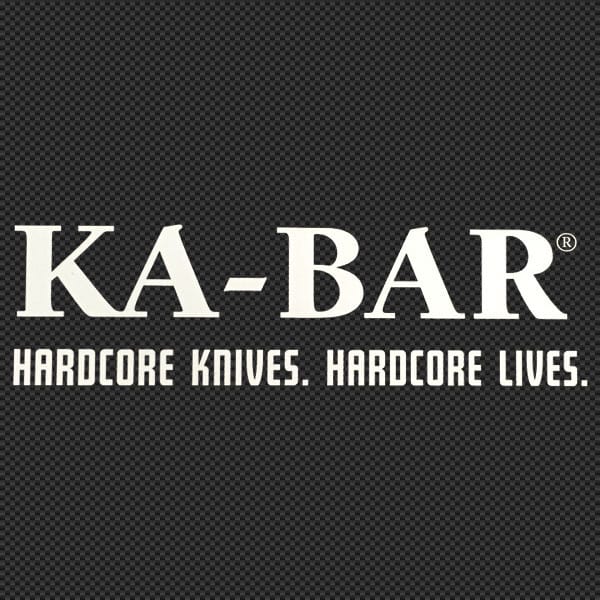
The history of KA-BAR goes back for 119 years (as of 2017). The company traces its origins to the formation of a limited partnership known as the Tidioute Cutlery Company, founded in Pennsylvania in 1897. In 1898, what would eventually become KA-BAR first began making and selling straight razors. The company changed its name to Union Razor in 1902. And by 1912, they were the Union Cutlery Company because they had expanded their product offering into fixed blade hunting knives.
Over time, Union managed to establish a close association with the United States military. This relationship really took off during World War II, when the Marine Corps approached the company looking for better knives to issue its soldiers. The Marines needed something that was going to be an improvement in terms of both strength and durability over older designs.
The result was a Marine combat knife that featured a 7″ blade, blood groove, double guard, and a leather handle. It was a design that would essentially become synonymous with the term combat knife and was easily the most recognizable bladed weapon of the era. It was so popular, in fact, that the company changed its name to KA-BAR to be more closely associated with the knife. And the KA-BAR 1217 USMC Fighting Knife remains the company’s top seller.
Over the years KA-BAR has continued expanding its product lineup. The straight razors are gone, but now the company also produces a broad range of folding knives. In addition, it has several specialty lineups including hunting and outdoors, military, law enforcement, all-purpose utility blades, as well as collectibles.
KA-BAR knives are still made primarily in the United States, although they do offer some economy-minded knives (a couple reviewed here) that are produced in China and Taiwan. Overwhelmingly, though, the knives are made in the U.S. and since 2003 the company has maintained its headquarters in Olean, NY.
Building on its strength and knowledge of producing blades meant for rugged use, KA-BAR has also moved into the realm of making industrial strength, heavy-duty outdoor knives. These are designed for the survivalist who demands that a knife be able to push the limits of what one typically expects from a blade, crossing over into jobs that are more closely associated with a hatchet or a machete.
Following this same trend, KA-BAR has additionally introduced some folding knives that are also meant to be heavy-duty tanks. They are long, heavy, and built to stand up to more than a fair amount of abuse. And while KA-BAR is not as well known for their folders, they do offer some quality, durability, and nice features at a bargain price point.
In terms of warranty and customer service, KA-BAR offers a Lifetime Warranty, provided you are the original owner of the knife. It protects against defects in materials and craftsmanship when used under normal circumstances.
In the following review, we will look at some classic KA-BAR tactical fixed blades, as well as a couple of their Becker designs that are built for rugged outdoor use. In addition, there are three folders of varying price, quality, and craftsmanship that may serve you well for both tactical and EDC purposes.
You might find interesting to read our best ESEE knives article.
OUR TOP KA-BAR FIXED BLADE KNIVES PICKS
#1 KA-BAR BECKER BK2
Specifications:
| Our Rating: | (4.9/5) |
| Steel: | 1095 Cro-Van |
| Blade: | 5.25 in |
| Thickness: | 0.25 in |
| Closed: | 5.5 in |
| Overall: | 10.5 in |
| Weight: | 16 oz |
Pros:
(+) Well balanced and comfortable
(+) Extremely durable and ready for heavy-duty use
(+) Very Secure sheath
Cons:
(-) Very heavy and fat
(-) Will rust without proper care
The Becker BK2 is a hunting and camping fixed blade whose ¼” thickness and full tang design scream heavy-duty. It is a US-made knife that weighs 16oz (453.6g) and has an overall length of 10.5” (26.7cm).
The Drop Point blade on the BK2 has a length of 5.25” (13.3cm). As was mentioned above, the thickness is .25” (.64mm) and it has a flat grind with 20° sharpening angle. The choil also functions well as a ferro rod striker.
The blade steel is 1095 Cro-Van carbon steel, which is designed to have improved wear resistance (additional chromium) and toughness (additional vanadium) over plain old 1095. It is treated to an HRC of 56-58 and finished with a non-reflective black coating.
The BK2 also has an Ultramid® (nylon) handle. It features an exposed pommel and a lanyard hole. The knife comes with a MOLLE compatible hard plastic sheath that includes a bottom hole for water drainage.
The BK2 knife was designed by knife maker Ethan Becker, founder of Becker Knife and Tool. Becker established his company in the 1980s when he set out to design the ultimate in heavy-duty tactical and survival knives. The BK2 is a strong statement in the pursuit of that endeavor.
The phrase “tank of a knife” gets thrown around a lot, and in this case, it is definitely an apt description. Wood processing, from chopping to batoning, is not a problem. The flat grind also makes it versatile across a number of cutting tasks and easy to field sharpen.
#2 KA-BAR JAROSZ TUROK FIXED BLADE KNIFE
Specifications:
| Our Rating: | (4.8/5) |
| Steel: | 1095 Cro-Van |
| Blade: | 6.25 in |
| Thickness: | 0.188 in |
| Closed: | 5.25 in |
| Overall: | 11.5 in |
| Weight: | 12.8 oz |
Pros:
(+) Very good handle ergonomics
(+) Excellent value
(+) Versatile blade for heavy-duty
Cons:
(-) Mid-weight, if you want something “indestructible”
(-) Not a tactical design like many KA-BARs
The Turok is the second knife to come from the Jarosz/KA-BAR partnership. Designer Jesse Jarosz has built a reputation for creating quality hand tools for woodworking and carpentry, and this knife is no exception.
The Turok is a little bit longer, but also lighter than the BK2 reviewed above. It features a Clip Point profile with a saber grind. Still, it is a substantial knife. It has a 6.25” (15.9cm) blade and a thickness of .19” (4.8mm). Like the BK2, the blade is made from 1095 Cro-Van, treated to an HRC of 56-58 and has a 20° sharpening angle.
The handle on the Turok is Ultramid® (nylon) and the knife comes with a Celcon® (an acetyl copolymer) sheath. It has an overall length of 11.5” (29.21cm) and weighs 12.8oz (363g).
The Toruk is a great value for a full tang, heavy-duty knife. The handle texturing provides for a really solid grip, and the handle overall has great ergonomics. While this knife is durable enough for wood processing 2-3” logs, the large swedge on the saber grind does tend to chew up your baton.
The sheath that comes with the Turok is also well designed and highly functional. It holds the knife both securely and silently and has a jimped thumb release that makes the knife easy to access. For an outdoor and bush knife, the Turok functions extremely well. The only real drawbacks might be if you are looking for something a little more tactical, or a little more heavy-duty.
Check out our suggested TOPS knives article.
#3 KA-BAR 1217 USMC FIGHTING KNIFE
Specifications:
| Our Rating: | (4.7/5) |
| Steel: | 1095 Cro-Van |
| Blade: | 7 in |
| Thickness: | 0.165 in |
| Closed: | 4 in |
| Overall: | 11.875 in |
| Weight: | 11.2 oz |
Pros:
(+) Well balanced
(+) Very sharp blade
(+) Fit for medium-heavy duty
Cons:
(-) Leather handle and sheath not very durable
(-) Not a top choice for bushcraft
The 1217 was designed for military use in World War II and has maintained its overall design since that point. There are modifications available, such as a Kraton handle and a serrated blade, but in this review, we will focus on the leather handle plain blade. This full tang knife has an overall length of 11.875” (30.2cm) and weighs 11.2oz (318g).
The 1217 has a blade length of 7” (17.8cm) and a .165” (4.2mm) thickness. The profile is a Clip Point with a flat grind that has been given a 20° sharpening angle. The 1095 Cro-Van steel is treated to 56-58 HRC. The blade features a deep swedge sweeping toward the tip and a blood groove.
The leather handle on the 1217 also has a powdered metal butt guard. The knife comes with a leather sheath that is carried by a belt loop. It is stamped with the USMC logo and features a drainage hole.
You could say that the 1217 was really the original combat survival knife. It was the design used during World War II that ended up being influential for many, many fixed blade knives to come in terms of its features and functionality. Even with all the options now available for specialty knives, it still remains a viable choice for a utility blade.
The 1217 will not be your champion wood processor if heavy-duty outdoor work is your main purpose. When it comes to jobs like batoning, the spine is not overly thick and the swedge tends to chew up your baton. However, the flat grind gives it a fair amount of belly for cutting over a range of tasks. The knife is also durably constructed, well balanced, and has great ergonomics.
#4 KA-BAR BK7
Specifications:
| Our Rating: | (4.7/5) |
| Steel: | 1095 Cro-Van |
| Blade: | 7 in |
| Thickness: | 0.188 in |
| Closed: | 5.75 in |
| Overall: | 12.75 in |
| Weight: | 13.6 oz |
Pros:
(+) Great values for a fixed blade knife
(+) Well balanced and has a great feel
(+) Slices very well
Cons:
(-) Might be too long for your tastes
(-) it struggles with finer tasks such as carving
The BK7 is the second Becker design featured in this review. Unlike the do-it-all industrial strength BK2, the BK7 is designed more with combat duty in mind. That is not to say, however, that it cannot withstand punishment—it can definitely take lots of it. Like the BK2, the full tang BK7 is also a beast of a knife. It weighs 13.6oz (386g) and has an overall length of 12.75” (32.4cm).
The blade on the BK7 is 1095 Cro-Van with a Clip Point profile and a flat grind. It also features a jimped thumb ramp to help with piercing and puncturing. The length of the blade is 7” (17.8cm) and it has a thickness of .188” (4.8mm).
The handle material is Ultramid®. It features a lanyard hole and pommel for emergency breaking. The sheath that comes with the BK7 is MOLLE compatible and is made from heavy-duty polyester.
Although KA-BAR markets this for combat utility—and it does have tactical features—the heft of the BK7 allows it to do a very good job with heavier tasks such as chopping wood and batoning. In fact, it batons very nicely, moving through wood evenly and with minimal force required. It can even serve as your machete if you are out bushwhacking. The BK7 is also nicely balanced and feels great in your hand.
For some, however, the size of this knife might be a drawback. The knife is very long and its size can be a hindrance when it comes to doing more detailed work. It can be heavy and cumbersome if you value traveling light and prefer a knife that will not interfere with movement.
We also suggest checking out our article about the best Fallkniven knives by clicking here.
#5 KA-BAR KRATON HANDLED STRAIGHT EDGE MARK I
Specifications:
| Our Rating: | (4.5/5) |
| Steel: | 1095 Cro-Van |
| Blade: | 5.125 in |
| Thickness: | 0.165 in |
| Closed: | 4.125 in |
| Overall: | 9.375 in |
| Weight: | 8 oz |
Pros:
(+) Good size for most bushcraft jobs
(+) Very nice intuitive feel and handling
(+) Excellent value
Cons:
(-) Not a heavy-duty wood processor
(-) Not a full tang knife
The Mark I is a remake of the knife issued to the Navy during World War II. It is a lighter, more nimble tactical knife compared to some of the other fixed blades reviewed here. The knife weighs 8oz (227g) and has an overall length of 9.2” (23.4cm).
The 1095 Cro-Van blade has a length of 5.125” (13cm). It has a Clip Point blade shape with a 20° sharpening angle and also features a flat grind.
As the name indicates, the handle is made from Kraton G®, which is a material touted for its resistance to sweat, chemicals, water, and wear. The handle features a powdered metal butt guard. The Mark I also comes with a glass-reinforced nylon sheath that is MOLLE compatible.
This is, of course, marketed as a combat-tactical knife, but it has more versatility than just that. This knife can also handle a lot of your bushcraft/survival tasks very well. It also has a great feel to it. The palm swell makes it very comfortable and allows for good control.
The Mark I is not a full tang knife, rather it is a stick tang. This means that the tang does not follow the shape of the handle, but instead simply extends into the handle. Generally speaking, a stick tang is considered to be a weaker design. However, this particular stick tang is well executed and the Mark I does retain some decent strength.
OUR TOP KA-BAR POCKET KNIVES PICKS
#6 KA-BAR DOZIER FOLDING KNIFE
Specifications:
| Our Rating: | (4.4/5) |
| Steel: | AUS-8A |
| Blade: | 3 in |
| Thickness: | 0.11 in |
| Closed: | 4.25 in |
| Overall: | 7.25 in |
| Weight: | 2.4 oz |
Pros:
(+) Great handle design
(+) Good corrosion resistant steel
(+) Solid EDC, particularly at this price point
Cons:
(-) Blade jimping is not highly functional
(-) Rides a little high in the pocket
The Dozier Folding Knife is a lockback design from knife maker Bob Dozier. This Taiwanese-made blade is designed for EDC. It has an open length of 7.25” (18.4cm) and weighs 2.4oz (68g).
The blade length on the Dozier is 3” (7.62cm) and it is made of AUS-8 stainless steel. Blade thickness is .11” (2.8mm). It is a modified Drop Point profile with a hollow grind that is treated to 56-58CR. The blade features a reversible thumb stud for one-hand opening.
The handle material is Zytel® (fiberglass reinforced nylon). It features a lanyard hole, a reversible pocket clip for tip-up carry, and a ringed pattern for improved grip.
The handle on the Dozier is one of its high points. It grips very well, even in wet conditions. It also comes in a variety of bright colors, which can be quite handy if you have ever lost track of a knife placed on the ground in an outdoor situation. The handle is also large enough for a good, comfortable feel, yet is still lightweight.
The Dozier has a solid lockback mechanism and deploys fairly easily with one-handed opening. It has a decent pocket clip, although it does tend to protrude a little bit as you carry it. Also, a bit on the negative side, the jimping along the spine of the blade is not highly functional. Your thumb tends to slip when you have it there for piercing and puncturing tasks.
We recommend checking our list of the top Boker knives here.
#7 KA-BAR 2-3050-9 MULE FIELD FOLDER KNIFE
Specifications:
| Our Rating: | (4.4/5) |
| Steel: | AUS-8A |
| Blade: | 3.875 in |
| Thickness: | 0.125 in |
| Closed: | 5.25 in |
| Overall: | 9.125 in |
| Weight: | 2 oz |
Pros:
(+) Heavy-duty, durable build
(+) Tight blade lock
(+) Deep pocket carry clip
Cons:
(-) Edge retention can be an issue
(-) Sheath is not the most durable
The MULE Folder is a plain blade folding knife (also available in a partially serrated version) built for heavy-duty tactical use. The knife is hefty, weighing 7.2oz (204g) and has an open length of 9.125” (23cm).
The blade length for the MULE is 3.875” (9.8cm) and is constructed of AUS-8A stainless steel. AUS-8A is the same composition as AUS-8, but it is taken through a different annealing process so that it is a bit tougher. The blade on this knife is treated to 57-59RC. It has a hollow grind and a Clip Point profile. The blade thickness is .125” (3.2mm). It also features a jimped thumb ramp.
The handle on this knife is Zytel® and features a lockback mechanism and a lanyard hole. It also has horizontal ribs for improved grip, a reversible pocket clip, and comes with a polyester sheath.
Like many of the KA-BAR fixed blades, the MULE is both heavy and heavy-duty. Most of its weight is concentrated in the handle. This knife has a very solid lockup mechanism and there is absolutely no play in the blade when it is deployed—even after a fair amount of rugged use. The MULE also has a nice pocket clip design that also it to be carried comfortably deep in the pocket for being such a large knife.
Although the AUS-8A steel is a bit tougher, it is still not one of the greatest for holding an edge. However, the hollow grind allows it to be fairly easy to re-sharpen. Also, it does come very sharp out of the box.
#8 KA-BAR AGAMA FOLDING KNIFE
Specifications:
| Our Rating: | (4.2/5) |
| Steel: | 420 Stainless Steel |
| Blade: | 3.625 in |
| Thickness: | 0.11 in |
| Closed: | 4.875 in |
| Overall: | 8.5 in |
| Weight: | 4.8 oz |
Pros:
(+) Lightweight
(+) Decent value EDC
(+) Comfortable handle
Cons:
(-) Not a very durable design
(-) Blade is not tough and does not hold an edge well
The Agama Folder is a budget utility knife produced in China and designed for EDC. It weighs 4.8oz (136g) and has an open length of 8.5” (21.6cm).
The blade length on the Agama is 3.625” (9.2cm) and it has a thickness of .11″ (2.8mm). The blade features an almond-shaped opening hole and a Clip Point profile with a hollow grind. The composition is 420 stainless steel treated to 50-52CR.
The handle on this knife is skeletonized G-10 and features a side lock. It has a pretty good feel to it and overall decent ergonomics when making some more forceful cuts.
This knife is what it is. We always get a little bit concerned when a knife manufacturer proclaims that one of the main attributes of a product is that it makes a great “stocking stuffer.” Attention to detail just is not there on this knife, as is indicated by elements such as the low quality, non-reversible pocket clip.
If you need something cheap and you are not overly concerned about blade toughness, then this may be the knife for you. Or, you might follow KA-BAR’s advice and give it as a gift to someone who needs a basic EDC. It is inexpensive and relatively lightweight for its size. It also has a durable enough build so that it will not fall apart before you have gotten a good amount of use out of it. The knife has a decent grip on it and an overall nice feel.
SUMMARY
In many ways, KA-BAR is an institution in the world of American-made knives. Luckily, however, they are not a company that has rested on their successes of the past. This is particularly true of their design partnership with Becker, which has produced some extremely good values on some very rugged knives. The same can also be said of the Jarosz-designed Turok—a well-executed bushcraft knife.
KA-BAR has done a nice job with the folders as well. They might not stand up to some of the top budget folders on the market right now, which are being produced by companies whose primary focus is folding knives. However, the KA-BARs are no slouches and will give you some great value for your money.
Write your comments below! We all benefit from your knowledge, expertise, and experience, so be sure to let us know what you think.
Image by Rich Bowen

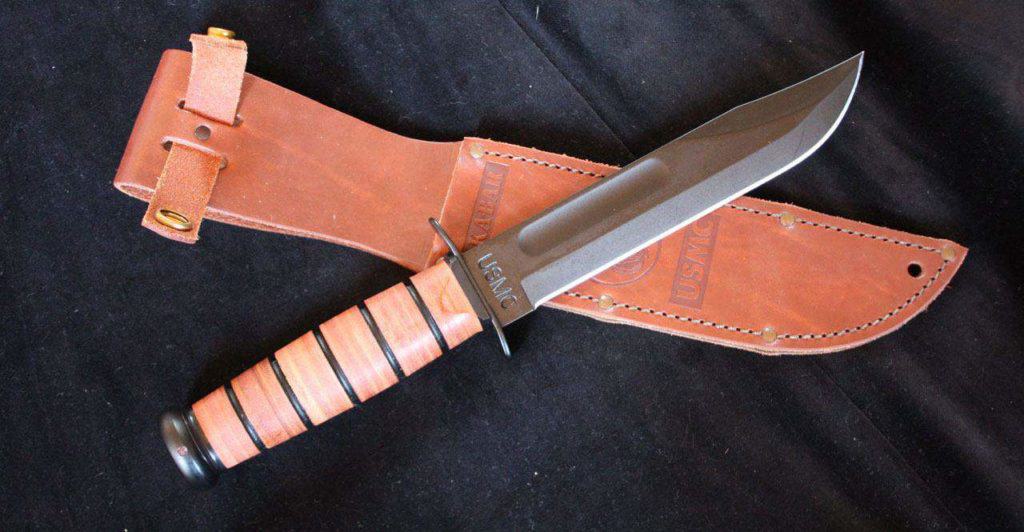












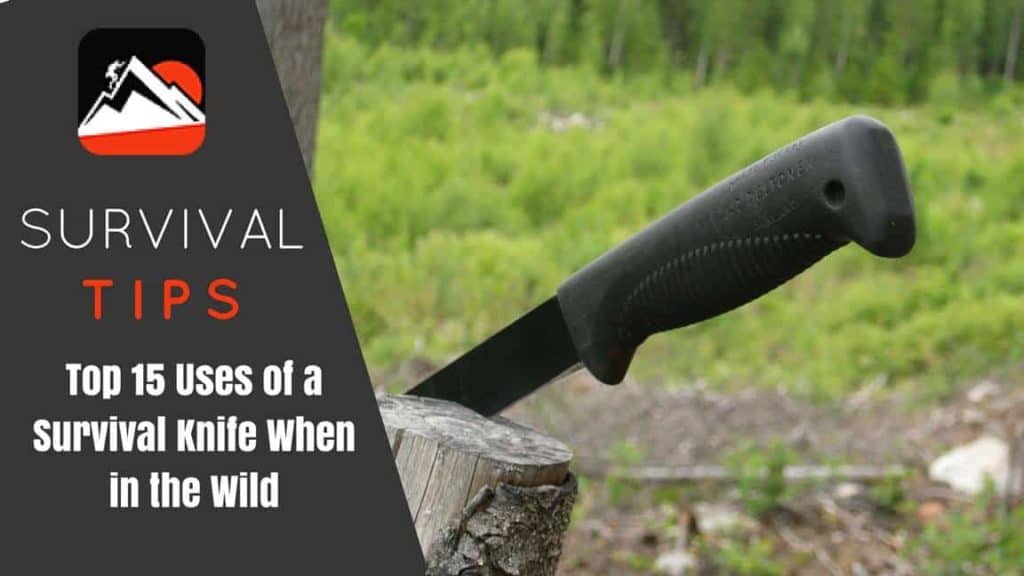
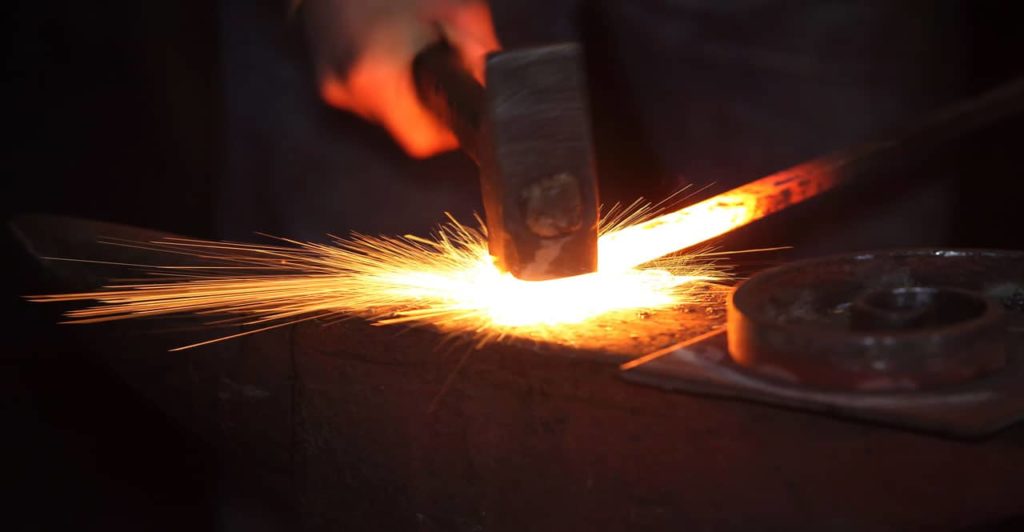
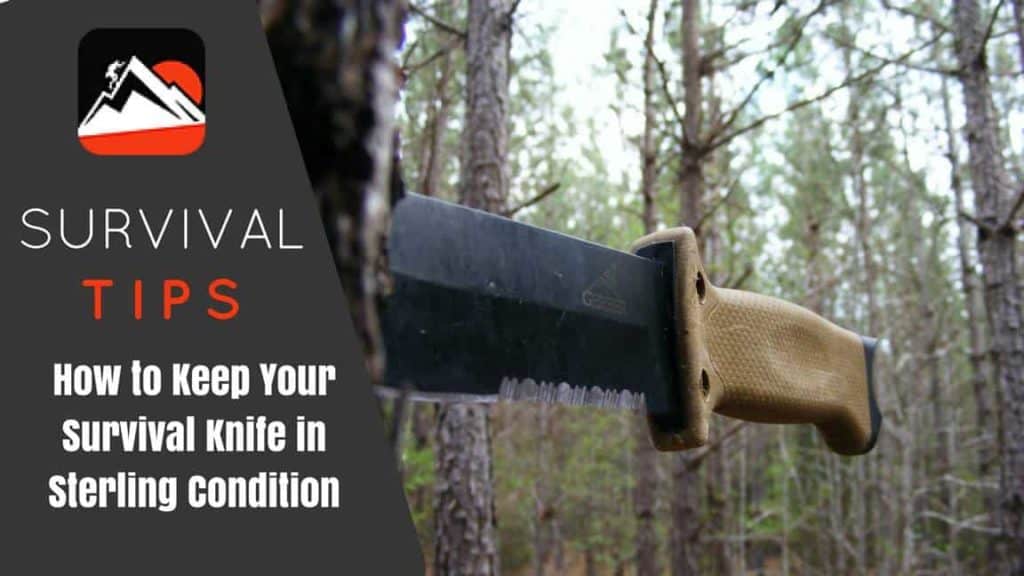
I am interested in the Kbar I’m a woman with a small hand. Which full tang knife would you recommend.
I would recommend the Becker BK2 or the BK7. The BK7 is lighter but might struggle with finer detail work if that’s what you need it for. Overall, I think you should go with the BK2 for the best all around.